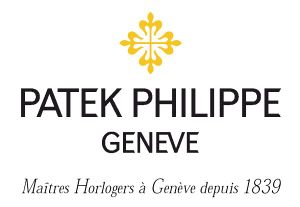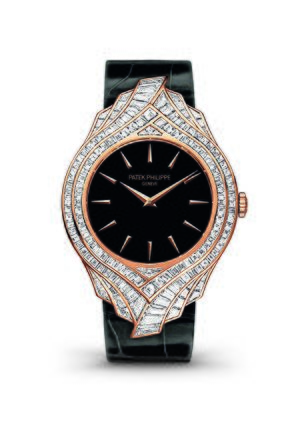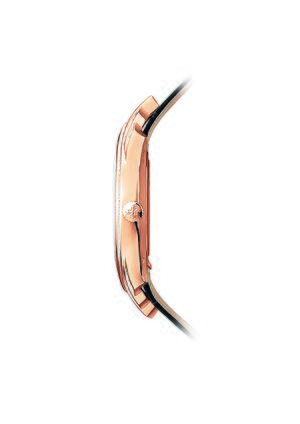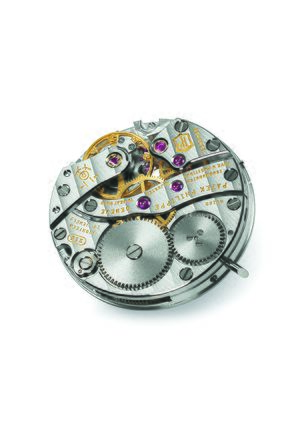Patek Philippe Calatrava Haute Joaillerie Ref. 4895R/en
Baselworld 2014
Press Release
Geneva, March 2014
Art as far as the eye can see
Patek Philippe's new Calatrava Haute Joaillerie Ref. 4895R combines the graceful contours of the Calatrava legacy with the fire of exquisite diamonds. In an inimitable way, it unites the craftsmanship of watchmakers and casemakers with the creativity of the Patek Philippe design department and the artistry of the manufacture's jewelers.
The art of haute joaillerie
The stage for the rich diamond-set wreath of the Ref. 4895R is an 18K rose gold case modeled after the classic round Calatrava style that dates back to 1932 when Patek Philippe first introduced this graceful design. The 162 baguette diamonds (~5.62 ct.) are draped around the dial in up to five rows and have flared ends over the strap. All the stones in the baguette rows are closed-set, creating a lovely contrast between the warm rose gold hue of the bezels and the white gleam of the diamonds. This type of setting imposes considerable challenges on the selection of the diamonds which first of all have to be internally flawless and sparkle in Top Wesselton fine white. Additionally, they need to be perfect in size, form, and cut to create a sublime ensemble with 162 individual baguette diamonds. The responsibility for the result lies in the hands of the manufacture's gemologist who spends countless hours looking at hundreds of stones under the magnifying glass, then places them side by side, repeatedly rejecting, rematching, and rearranging them until he has found the 162 individual diamonds with which the artistic drape will be fashioned. Somewhat less time is required to identify the 20 baguette diamonds (~0.72 ct.) that will be set in the classic 18K rose gold prong buckle. It secures a very fine shiny alligator strap with large square scales in a shade of black that perfectly matches the color of the dial.
Before the precious stones can be paired with their closed settings, the lapidary must refer to accurately dimensioned sketches and cut every single baguette to the shape that corresponds to its position in the matrix, and that assures a seamless fit relative to the adjacent diamonds. This illustrates that the value of an haute joaillerie watch is linked not merely to the price of the gems but just as importantly to the work of the designers, the gemologist, the lapidary, and the gemsetters who spend intensive weeks perfecting the creations that will ultimately display their full splendor on the wrists of their elated owners.
The art of the dialmaker
The dial is at once unpretentious and sumptuous. Its rich black color contrasts against the gleaming fine white of the diamonds and the opulent warmth of rose gold. This intense black is created by consecutively applying twelve coats of lacquer, and each coat must be absolutely immaculate. Even the slightest dust particle trapped in one of these many coats would ruin the dial, so clean-room conditions are essential. Additionally, every coat must first harden completely and be scrupulously inspected for cavities before the following coat can be applied. The next critical phase involves drilling the bore for the arbors of the Dauphine hour and minute hands as well as all 24 holes for the tiny feet of the twelve applied arrow hour markers that are securely riveted to the dial from the rear. Plenty of work is also involved in the making of the 18K hands and hour markers themselves. The two facets of the Dauphine hands and the three facets of the hour markers are mirror-polished, forming a crisp geometrical profile accentuated with the sharp ridge in the middle. Even the slightest flaw in production would be a defect that cannot be ignored – with only one consequence: scrap. At Patek Philippe, no effort is spared to turn dials, hour markers, and hands into small but impeccable works of art. Indeed, the completion of the dial of the Calatrava Ref. 4895 alone involves more work than the overall production of many a timepiece.
The art of horology
Aside from all the meticulous effort invested in cases, precious stone settings, and dials, Patek Philippe's core business should not be forgotten. It is manifested in the manually wound mechanical caliber 215 movement that powers the hands of the watch. It is a legendary movement that has been permanently refined since it was launched more than forty years ago and can be admired through the display back of the new ladies' Calatrava Ref. 4895R. Its elegantly curved train bridge, the barrel bridge, the straight balance cock, and the independent escape wheel bridge are decorated with Geneva striping and feature glistening round-chamfered, mirror-polished edges. Parts of the main plate can be seen between the bridges and wheels. It is decorated with perlage composed of numerous small, overlapping cloudlike stipples. The movement beats with a frequency of 28,800 semi-oscillations per hour (4 hertz) and is endowed with a Patek Philippe Gyromax® balance as well as a patented Spiromax® balance spring made of Silinvar®. Thanks to its unique properties and proprietary geometry, this innovative silicon-based material contributes significantly to the excellent rate accuracy of the watch. Not least, this is guaranteed by the strict directives of the Patek Philippe Seal, which for the caliber 215 tolerates daily rate deviations of no more than -3 to +2 seconds. It can be identified by the gold-filled "double-P" engraving in the escape-wheel bridge.
Patek Philippe's dial tradition
Quite often, the dial is referred to as the face of a watch and largely influences the overall impression that a timepiece makes. Accordingly, dialmakers rank among the most sought-after specialists in the realm of horology and, especially at Patek Philippe, have very close-knit relationships with the manufacture. When Patek Philippe, for a lack of successors in the founding families, was up for sale in the early 1930s, the Geneva-based dial manufacture Stern Frères was among the seriously interested prospects. At that time, it was probably the best and most famous dial specialist in the Swiss watchmaking industry. Patek Philippe was one of its customers. Stern Frères was also domiciled in Geneva, and the owners of both companies knew and trusted each other. Consequently, the founding families confidently entrusted Patek Philippe to the hands of the Stern brothers in 1932. The Stern family remained loyal to the "face of the watch" as evidenced by the many amazing creations presented since 1932: dials with cloisonné enamel or miniature enamel painting, guilloched or gem-set oeuvres, and meanwhile even precious wood marquetry of the most filigreed kind. President Thierry Stern, the fourth-generation member of the family at the helm of Patek Philippe, makes it abundantly clear that he has not replaced dialmaker DNA with watchmaker DNA: he has both. For this reason, Patek Philippe operates its own dial manufacture which produces artistic creations like the face of the new Haute Joaillerie Calatrava Ref. 4895R.



